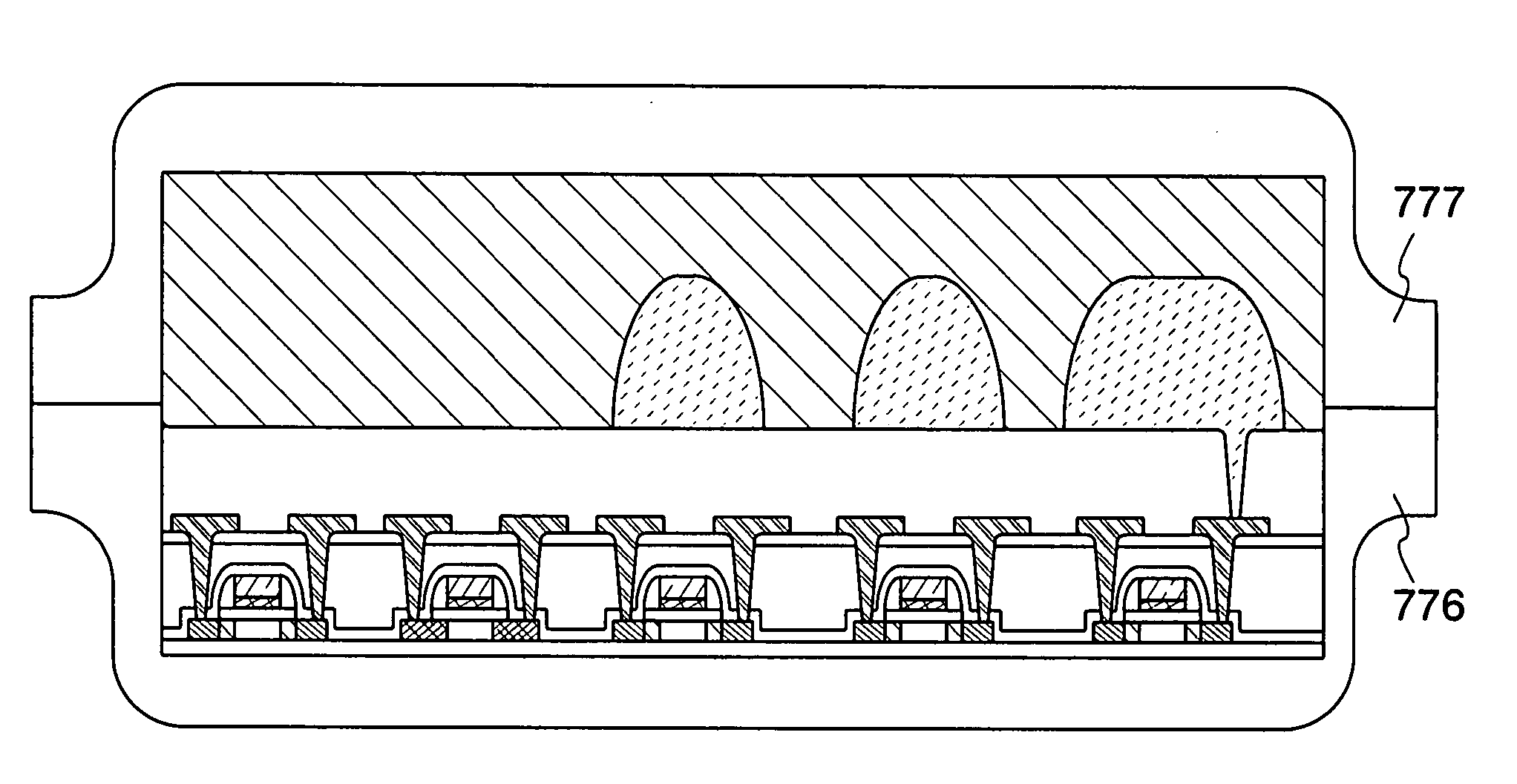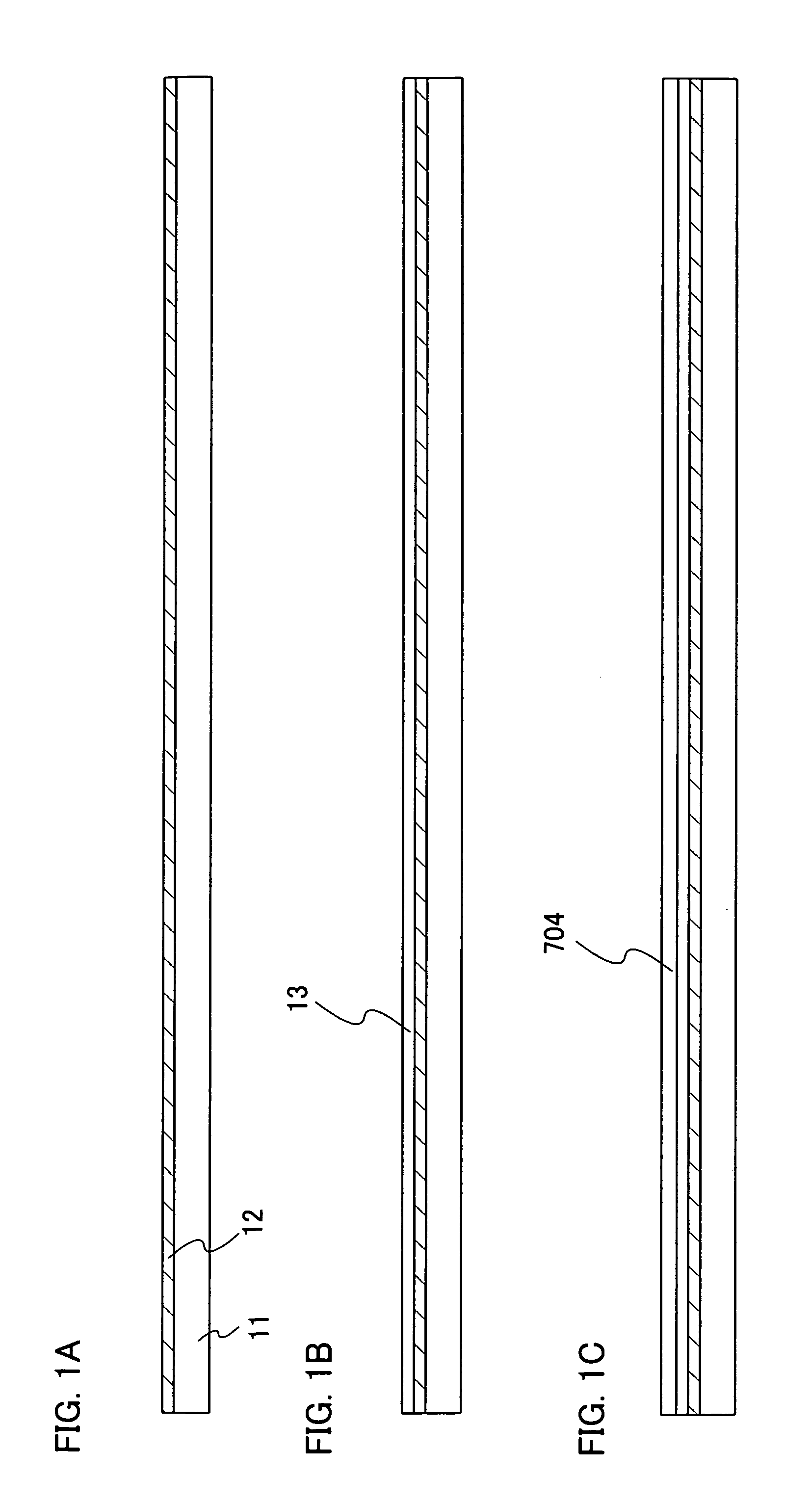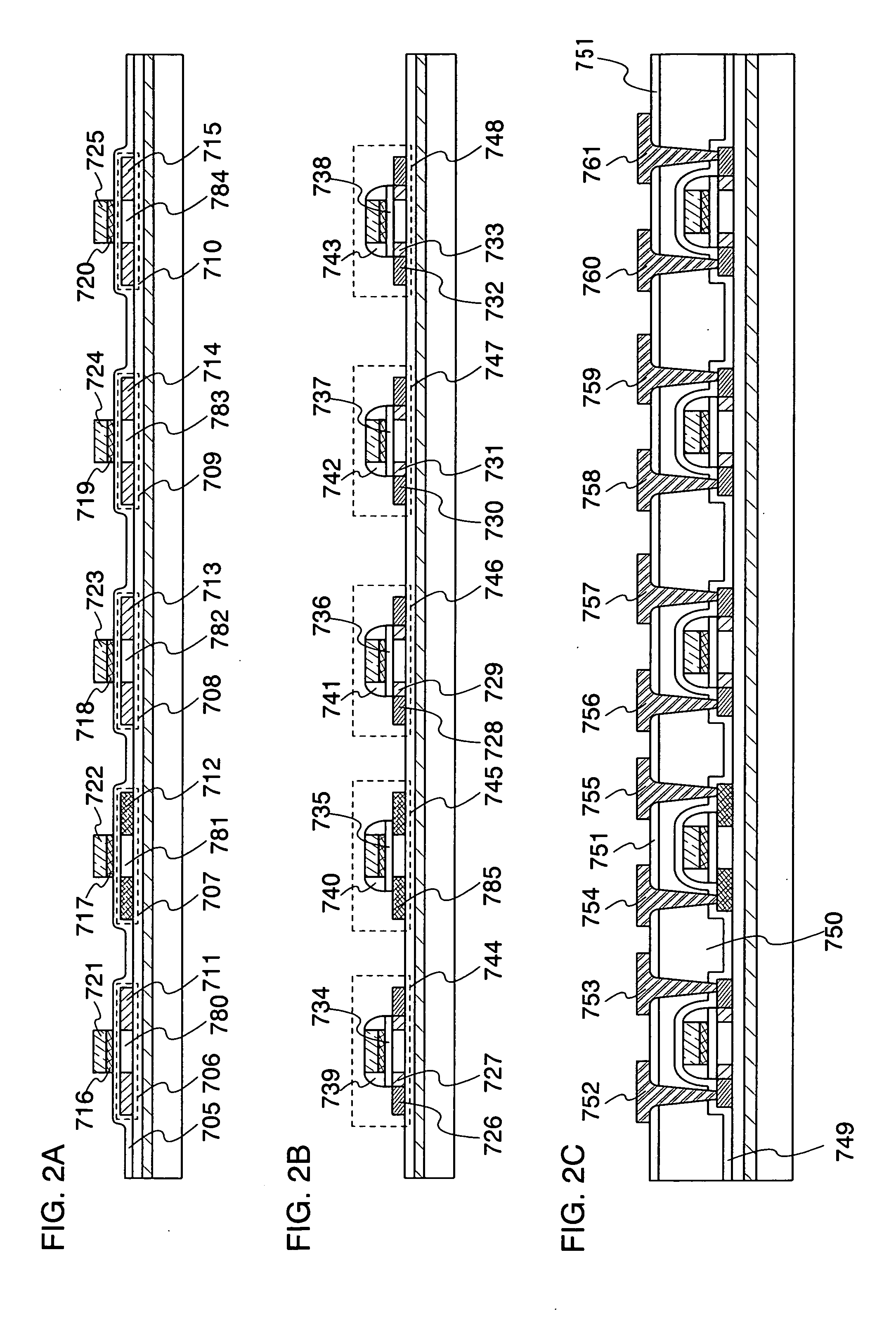Method for manufacturing antenna and method for manufacturing semiconductor device
a manufacturing method and antenna technology, applied in the manufacture of printed circuits, solid-state devices, basic electric elements, etc., can solve the problems of increasing the number of steps for forming antennas, reducing communication distances, and requiring a lot of processing time, so as to reduce antenna resistance, increase antenna width, and increase the number of windings
- Summary
- Abstract
- Description
- Claims
- Application Information
AI Technical Summary
Benefits of technology
Problems solved by technology
Method used
Image
Examples
embodiment modes
[0044] The embodiment modes of the present invention will be described below. It is easily understood by those skilled in the art that the embodiment modes and details herein disclosed can be modified in various ways without departing from the purpose and the scope of the invention. The present invention should not be interpreted as being limited to the description of the embodiment modes to be given below. Further, in the structure of the present invention, reference numerals indicating the same things are commonly used in the drawings.
embodiment mode 1
[0045] In this embodiment mode, an example of a method for manufacturing a semiconductor device of the present invention will be described with reference to the drawings.
[0046] First, a separation layer 12 is formed over a surface of a substrate 11 (FIG. 1A).
[0047] The substrate 11 is removed in the subsequent step, and can be formed using a glass substrate, a quartz substrate, a ceramic substrate, or the like. Further, a metal substrate containing stainless steel, a silicon substrate, or a semiconductor substrate having a surface over which an insulating film is formed, may also be used as the substrate 11. Furthermore, a flexible substrate typified by a synthetic resin such as acrylic can be used. Preferably, a glass substrate, a plastic substrate (for example, an acrylic substrate) having a heat resistance property, which can withstand heating treatment in a process of manufacturing a semiconductor device, or the like may be used. As the plastic substrate having the heat resist...
embodiment mode 2
[0114] In this embodiment mode, a method for manufacturing a semiconductor device, which is different from the method described in Embodiment Mode 1, will be described with reference to the drawings.
[0115] Although a case of forming the antenna in the interior portion of the element layer along with the thin film transistors, is described in Embodiment Mode 1, a method for forming a semiconductor device where an antenna is separately formed from thin film transistors and then the antenna and the thin film transistors are electrically connected to each other, will be described in this embodiment mode.
[0116] First, a substrate over which an antenna is provided, is previously formed. A method for forming the substrate over which the antenna is provided, will be described below.
[0117] A conductive film is formed over a substrate 235 by coating. Alternatively, in order to prevent part of a substrate 235 from being etched in patterning the conductive film by laser irradiation in a subs...
PUM
| Property | Measurement | Unit |
|---|---|---|
| wavelength | aaaaa | aaaaa |
| wavelength | aaaaa | aaaaa |
| width | aaaaa | aaaaa |
Abstract
Description
Claims
Application Information
 Login to View More
Login to View More - R&D
- Intellectual Property
- Life Sciences
- Materials
- Tech Scout
- Unparalleled Data Quality
- Higher Quality Content
- 60% Fewer Hallucinations
Browse by: Latest US Patents, China's latest patents, Technical Efficacy Thesaurus, Application Domain, Technology Topic, Popular Technical Reports.
© 2025 PatSnap. All rights reserved.Legal|Privacy policy|Modern Slavery Act Transparency Statement|Sitemap|About US| Contact US: help@patsnap.com



